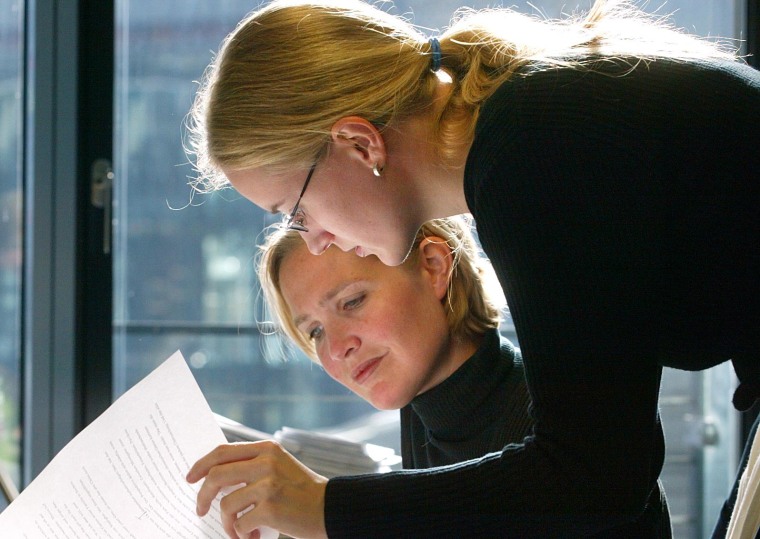Social Security has more than its share of critics, but over the years it has managed, at least, to provide a special cushion for some women.
Because women in the past were less likely to work and tended to accumulate less in Social Security benefits, married women have disproportionately benefited from the spousal benefit, which entitles them to as much as half of their partner's Social Security benefit. And because women tend to outlive men, they are more likely than their husbands to receive Social Security survivors’ benefits.
But that gender gap is closing, according to recently published research from the Center for Retirement Research at Boston College.
"As women's labor force participation and earnings increase, more and more female retirees will receive benefits based on their own working record, and fewer of them will be eligible for only auxiliary benefits, based on their husbands' working history," the researchers found.
Women in the workforce
The shift in women's labor force participation has been dramatic. When the cohort of women born between 1931 and 1935 were between 24 and 35 years old, just 37 percent of them worked. But when Generation X women born between 1966 and 1975 were that age, 75 percent of them did, according to earlier work by the researchers. As a result, they project that while 44 percent of the older cohort received Social Security benefits based on their own work history, some 75 percent of the Gen X cohort will.
Study: 41 percent expect no Social Security benefits
The mass movement of women into the workforce is affecting how many of them will receive spousal Social Security benefits. Some 56 percent of the women born between 1931 and 1935 received these benefits, either as their only benefit or as an addition to their own Social Security benefit. For Gen X women born between 1966 and 1975, just 25 percent are expected to receive spousal benefits as their sole benefit or as a supplement to their own.
Women are "more likely to receive some benefit on their own work history," though they continue to receive some help from spousal benefits, said Joan Entmacher, vice president for family economic security at the National Women's Law Center.
How big could your Social Security check be?
At the same time, the marriage rate has been decreasing. Some 84 percent of the women born between 1931 and 1935 were married at ages 25 to 34, and almost 70 percent of them were married at ages 55 to 64. But for women born between 1966 and 1975, fewer than 60 percent were married at ages 25 to 34 and the researchers expect that rate to drop to 56 percent at ages 55 to 64.
That shift is leaving fewer women eligible to receive a spousal benefit, or the survivor's benefit available to spouses who outlive their partners.
TODAY Money: Tips for Maximizing Your Social Security Benefits
"The declining marriage rate is much more detrimental to women in Social Security than men," Entmacher said. "They earn less, they live longer, and they are much more likely to be single parents," which makes it harder to work full time and put away money for later in life.
Women's Social Security edge
But experts do not expect women's Social Security benefits "advantage" to disappear.
"While an increasing number of women will have higher earnings over their lifetimes than their husbands do, the projections are that at the point of widowhood — and women still outlive men — that that benefit for the widow to step up to what her deceased husband was getting is going to continue to be important for women's financial security. Not as important as in the past, but still, a boost," said Entmacher.
How much do you know about Social Security benefits?
Women account for 56 percent of all Social Security beneficiaries age 62 and older, and roughly 66 percent of beneficiaries are at least 85 years old, according to the Social Security Administration. Overall, almost 60 percent of Social Security beneficiaries are women.
"Women still don't earn as much as men," said April Wu, an author of the Center for Retirement Research paper who is now a researcher at Mathematica Policy Research. "There are still 25 to 30 percent of women benefiting from those provisions." The spousal and survival benefits, Wu said, "have important implications for women's retirement security."
